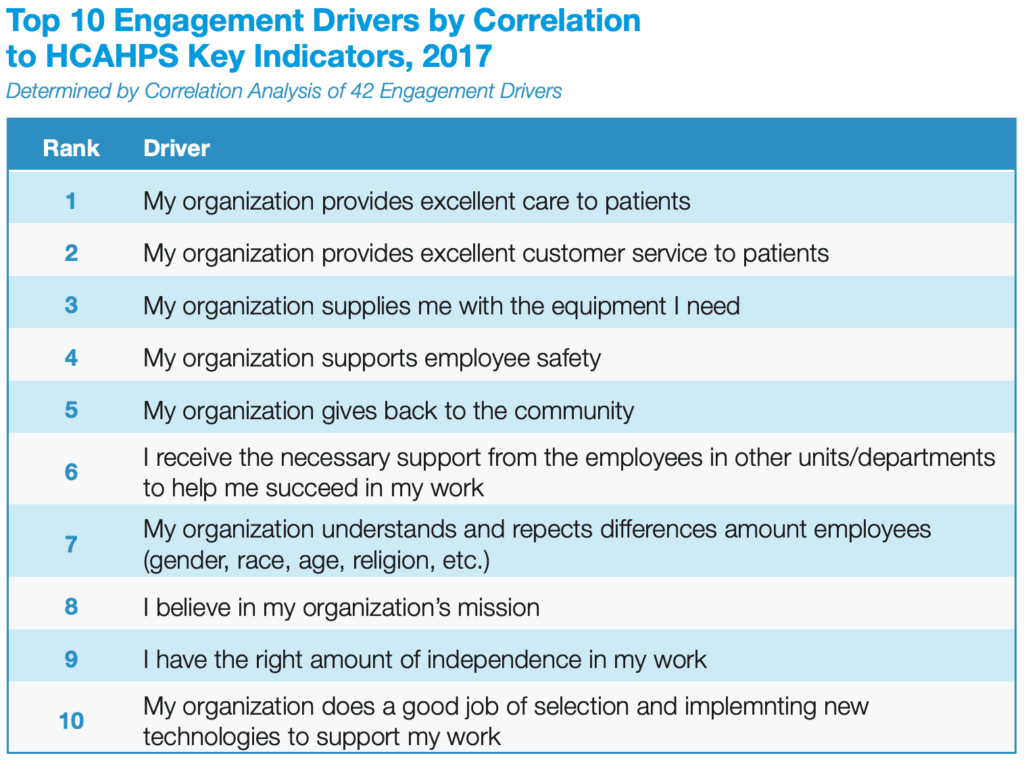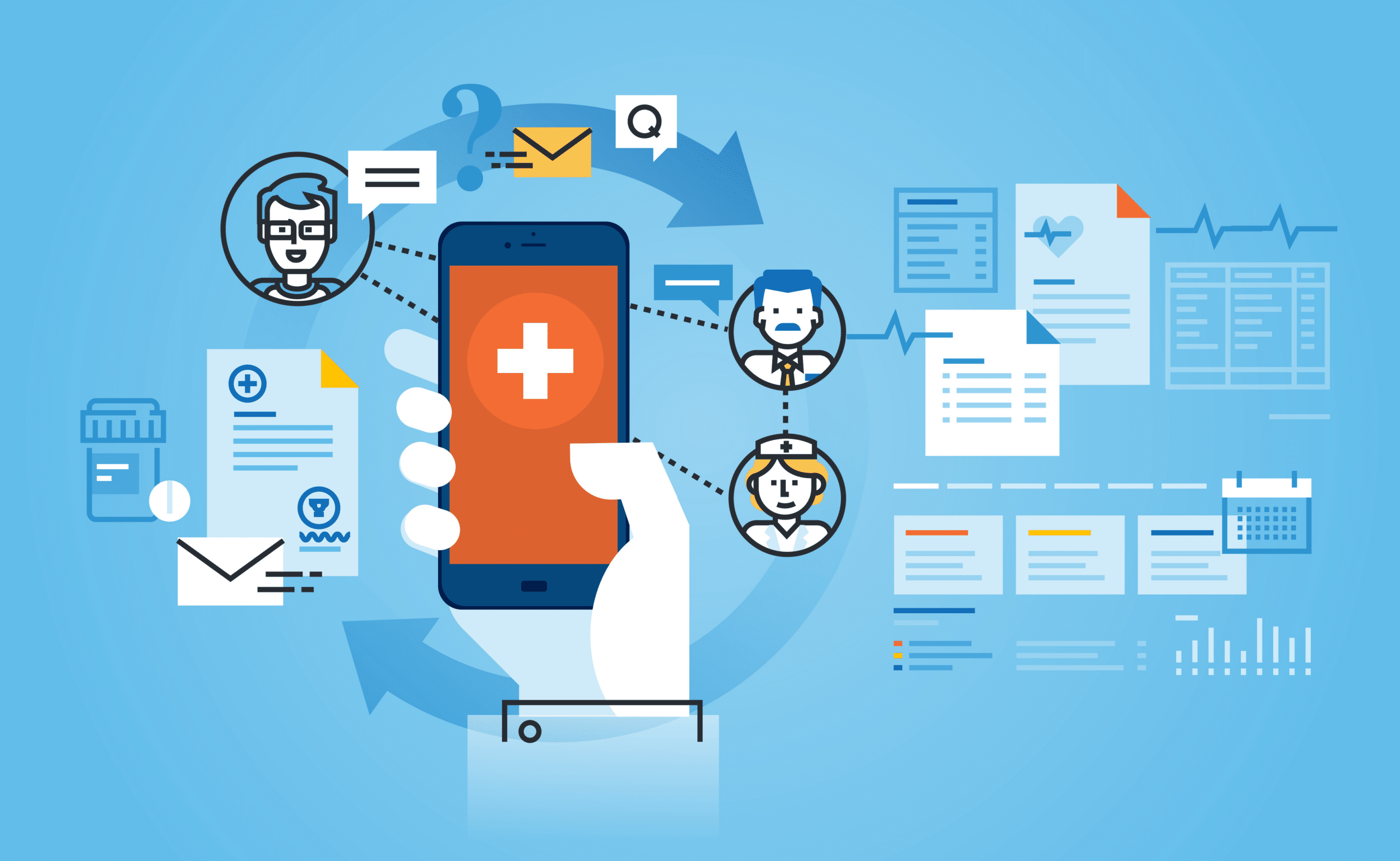Building a 360 ecosystem of care is no small undertaking. Once you’ve improved on your past standards and expanded your network of consumers and peers, it’s important to ensure your newfound relationships start and stay strong.
Elevated experiences through higher engagement
Going to the doctor, staying at a hospital, undergoing surgery — none of these are particularly positive activities to experience. More often than not, these activities come with a side of stress, fear, and uncertainty, all of which impact how a person experiences the world. That’s why, outside of treating illnesses or ailments, clinicians need to provide treatment that soothes mental, emotional, and environmental well-being, too.
This includes things like spending more time getting to know your consumer, ensuring their comfort is maintained and that the comfort of their visitors is also taken into consideration. Good consumer experience can drive higher hospital profitability. According to a Deloitte study: “This association is strongest for aspects of consumer experience most closely associated with better care — in particular, nurse-consumer engagement.”
An extra visit during rounds, a remembered favorite snack, and an extra bit of reassurance before a procedure — all go a long way to provide ease of mind. Often the things consumers most look for are quality communication, responsiveness, and a clear understanding of their current status or health plan. According to Advisory Board, these 10 drivers have the most impact on a consumer, outside of successful procedures, treatments, and diagnoses:

When employees are more engaged, consumers report higher satisfaction with their healthcare experiences. “It makes sense that highly engaged health care staff — who are willing to go above and beyond for their organization — would be willing to go above and beyond for consumers.” According to data from the Advisory Board 2017 Employee Engagement Survey, for every 1% increase in hospital employee engagement, and engagement’s overall Hospital Consumer Assessment of Healthcare Providers and Systems (HCAHPS) overall hospital rating increases by .33 points, and a 0.41-point increase in patient safety grades. According to the study, “engaged employees are three times as likely as disengaged employees to earn top performance marks.”
Caregivers as an extension of consumers
Sixty percent of consumers have loved ones actively supporting them during a hospital stay — and perhaps more importantly, after the hospital stay — so it’s also important to keep consumers’ caregivers top of mind. Oftentimes, caregivers “play an important role in the transition of a complex medical consumer by impacting a consumer’s ability to understand and adhere to their discharge instructions from acute care hospitals to home.” Because of this, keeping the caregiver engaged, informed, and comfortable must also be a part of the ecosystem of care.
“Nursing teams will need to focus on consumer caregivers almost as much as the consumers themselves in order for both consumers and caregivers to recognize a high-quality consumer experience,” said Brenda Aubin, BSN, RN, Clinical Integration Manager for Amplion Clinical Communications.
Amplion examined the expectations and experiences that consumers and their loved ones/consumer advocates have during hospital stays. According to Aubin, “in nearly every category surveyed in the study — from the range of feelings both groups felt about the care the consumer received to how they would improve the hospital experience — the loved one/consumer advocate consistently graded the nursing staff lower than the consumer did in meeting the consumer’s needs.”
Once a consumer leaves a care facility, the caregiver acts as an ally in care, continuing treatment, administering medication, and overseeing the consumer’s overall well-being. Treating caregivers like a partner in the plan and ensuring that they are included goes a long way.
Factoring in social determinants of health
A major factor for achieving success in a person’s well-being is to be able to support non-clinical areas of a consumer’s life — and social determinants of health help providers do so.
“People tend to rationalize social determinants of health first in their hierarchy of needs, so if people are worried about where they’re going to sleep, they aren’t thinking about taking the right medications or going to an appointment,” said LeRoy Jones, founder and CEO of GSI Health. “Sometimes you have to treat the most acute pain the consumer is experiencing — even if the pain is a social determinant — before the treatment for a medical condition can be effective.”
Leveraging social determinants of health data in electronic format, such as in an enterprise CRM like Salesforce Health Cloud, helps care teams identify and better understand non-medical issues impacting a consumer, thereby allowing them to better tailor their health plans to accommodate those issues. By working on both medical and non-medical determinants, care teams can achieve a more comprehensive approach.
An example may be something as simple as using a consumer’s preferred method of communication. While more elderly consumers may prefer paper mail and talking on the phone, those of a younger generation may be looking for an app, or prefer text messaging over phone calls. In any case, “consumers want to be more engaged in their care and desire more options for interacting with their healthcare providers using the same communication methods they regularly use in every other part of their life.”
Developing stronger relationships takes more time and effort, but the ROI is proven. With the right tools and technology in place, healthcare organizations can enable their workforce to better serve and understand their consumers.
Silverline can help you on your journey to a better Salesforce ecosystem. Get the ebook to learn what our healthcare experts can bring to your Org.





